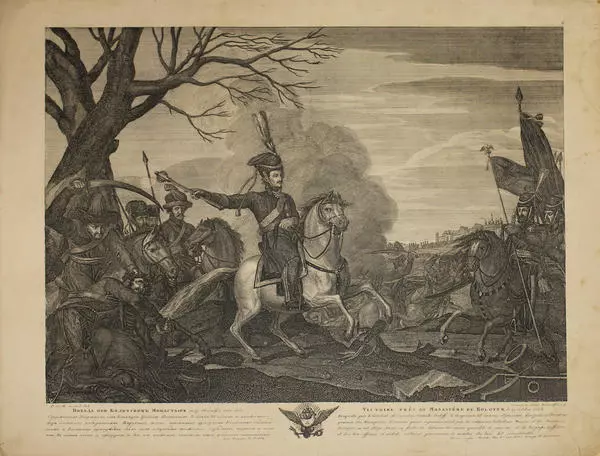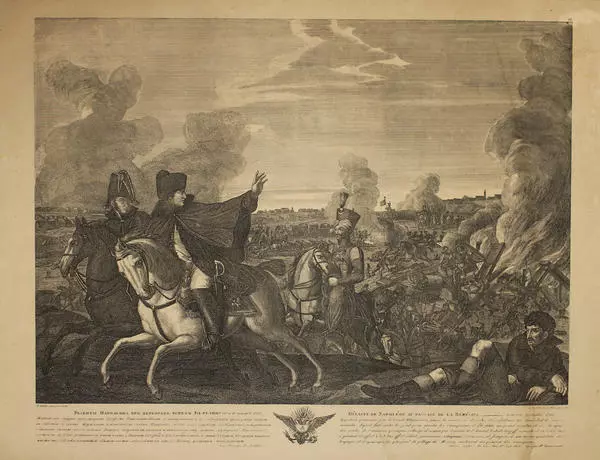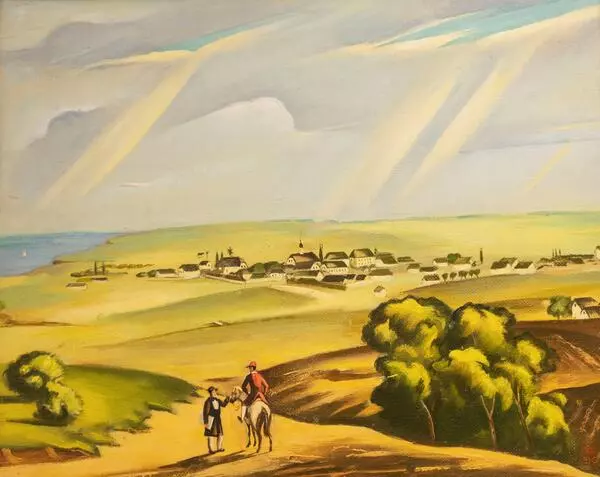There is a painting with a view of the German town of Herrnhut in the museum-reserve ‘Old Sarepta’. The artist Sergei Fedorov repeated the plot of an old German engraving of the 18th century. Pictures of Herrnhut were in almost every house in Sarepta, because this town had a special meaning for the Sareptians.
Herrnhut (German Herrnhut means - ‘under the protection of the Lord’) was founded in 1722 by the followers of the Hussite revolution - a massive religious and political movement in Europe in the 15th-17th centuries.
The Hussite movement originated in the Czech Republic at the beginning of the 15th century. It was caused by two reasons. On the one hand, it was the dissatisfaction of a part of the Czech society with abuses by the Catholic Church. On the other hand, protest moods were fueled by the strengthening of German influence in the Czech Republic. Peasants, merchants, artisans and feudal lords moved to the Czech Republic from Germany.
The main speaker for the protest sentiments of the Czechs was Jan Hus, the priest and rector of the Prague University. He demanded a radical reform of the church, its complete subordination to the state, the introduction of punishment for clergy in his lectures and sermons. Hus was accused of heresy and burned at the stake in 1415 for his views.
In the summer of 1419, an open armed struggle began between the Hussites and Catholics. At first, the Hussites had military success and defeated five crusades directed against them. But by the 1430s, they were failing. Two directions were formed in the Hussite movement,: the moderate (Utraquists) and the revolutionary (Taborites). The Utraquists made a compromise with the Catholics. And the new government of the Czech Republic and Moravia, which consisted of Utraquists, began a struggle against the Taborites.
Separate detachments of the Taborites continued to fight the Catholics until 1437. Their moderate course was preserved after the final defeat of the Taborites. The ideologists of this trend preached the restructuring of society on the ideas of equality, universal labor, love, unity, non-interference of the state in the affairs of the church.
The Taborites followers took refuge in Bohemia. There, in 1457, they formed a community which they called the Fraternal Union, or Czech Brothers. Currently, Bohemia, along with Moravia and Czech Silesia is part of the modern Czech Republic. Over time, as a result of continued persecution by the Catholic Church, the Czech brothers were dispersed throughout Europe, losing a unified organization.
The revival of the Fraternal Union at the beginning of the 18th century is associated with the name of Count Nikolaus von Zinzendorf. Sympathizing with the Czech brothers, he invited them to settle on his estate Betelsdorf in Saxony. In 1722, the first settlers arrived at the count’s estate. In the same year, they founded the nearby town of Herrnhut.
Hernguters considered their main goal to be the conversion of pagans and representatives of other Christian confessions to the true faith. For this purpose, they founded missions in different parts of the world - from America to New Zealand. One of their famous colonies was the Russian Sarepta, founded in the lower Volga steppes.
Herrnhut (German Herrnhut means - ‘under the protection of the Lord’) was founded in 1722 by the followers of the Hussite revolution - a massive religious and political movement in Europe in the 15th-17th centuries.
The Hussite movement originated in the Czech Republic at the beginning of the 15th century. It was caused by two reasons. On the one hand, it was the dissatisfaction of a part of the Czech society with abuses by the Catholic Church. On the other hand, protest moods were fueled by the strengthening of German influence in the Czech Republic. Peasants, merchants, artisans and feudal lords moved to the Czech Republic from Germany.
The main speaker for the protest sentiments of the Czechs was Jan Hus, the priest and rector of the Prague University. He demanded a radical reform of the church, its complete subordination to the state, the introduction of punishment for clergy in his lectures and sermons. Hus was accused of heresy and burned at the stake in 1415 for his views.
In the summer of 1419, an open armed struggle began between the Hussites and Catholics. At first, the Hussites had military success and defeated five crusades directed against them. But by the 1430s, they were failing. Two directions were formed in the Hussite movement,: the moderate (Utraquists) and the revolutionary (Taborites). The Utraquists made a compromise with the Catholics. And the new government of the Czech Republic and Moravia, which consisted of Utraquists, began a struggle against the Taborites.
Separate detachments of the Taborites continued to fight the Catholics until 1437. Their moderate course was preserved after the final defeat of the Taborites. The ideologists of this trend preached the restructuring of society on the ideas of equality, universal labor, love, unity, non-interference of the state in the affairs of the church.
The Taborites followers took refuge in Bohemia. There, in 1457, they formed a community which they called the Fraternal Union, or Czech Brothers. Currently, Bohemia, along with Moravia and Czech Silesia is part of the modern Czech Republic. Over time, as a result of continued persecution by the Catholic Church, the Czech brothers were dispersed throughout Europe, losing a unified organization.
The revival of the Fraternal Union at the beginning of the 18th century is associated with the name of Count Nikolaus von Zinzendorf. Sympathizing with the Czech brothers, he invited them to settle on his estate Betelsdorf in Saxony. In 1722, the first settlers arrived at the count’s estate. In the same year, they founded the nearby town of Herrnhut.
Hernguters considered their main goal to be the conversion of pagans and representatives of other Christian confessions to the true faith. For this purpose, they founded missions in different parts of the world - from America to New Zealand. One of their famous colonies was the Russian Sarepta, founded in the lower Volga steppes.








